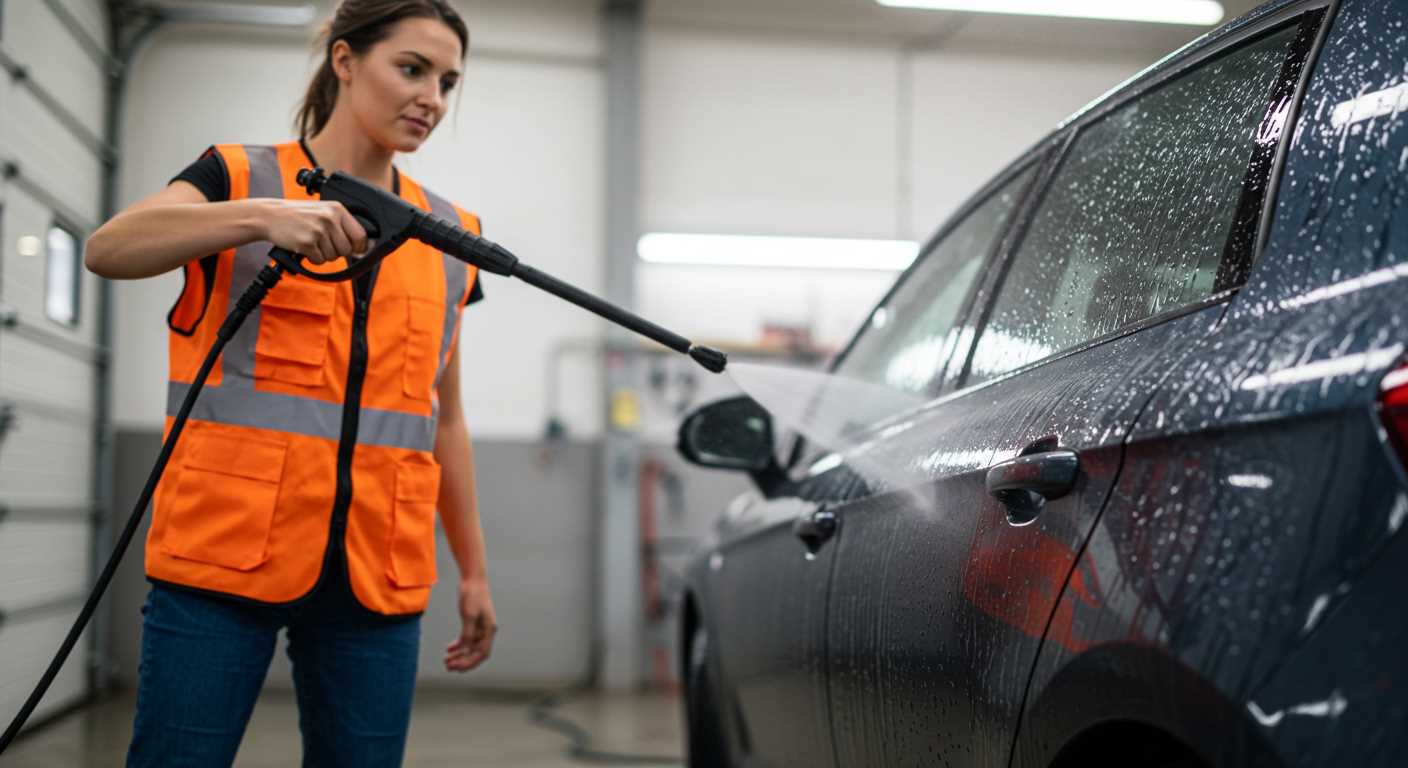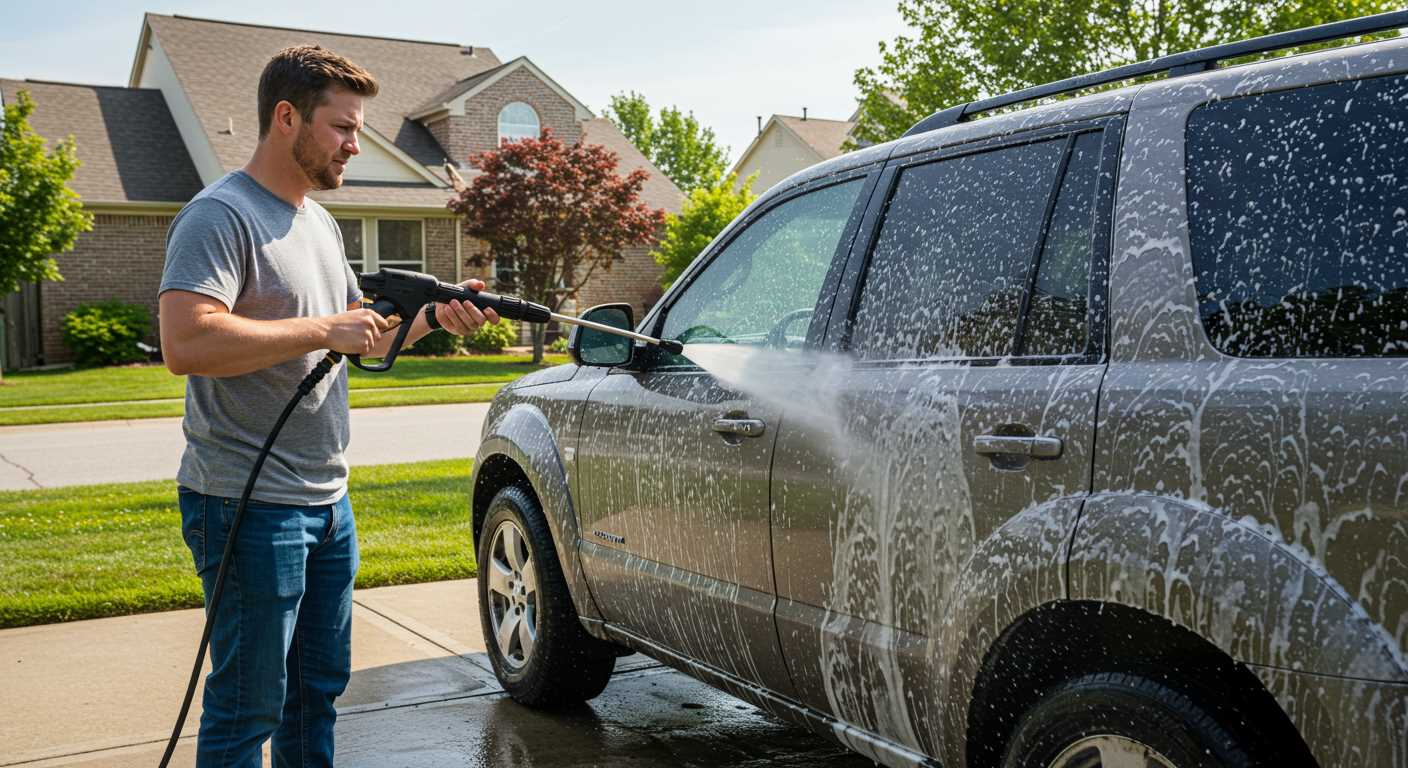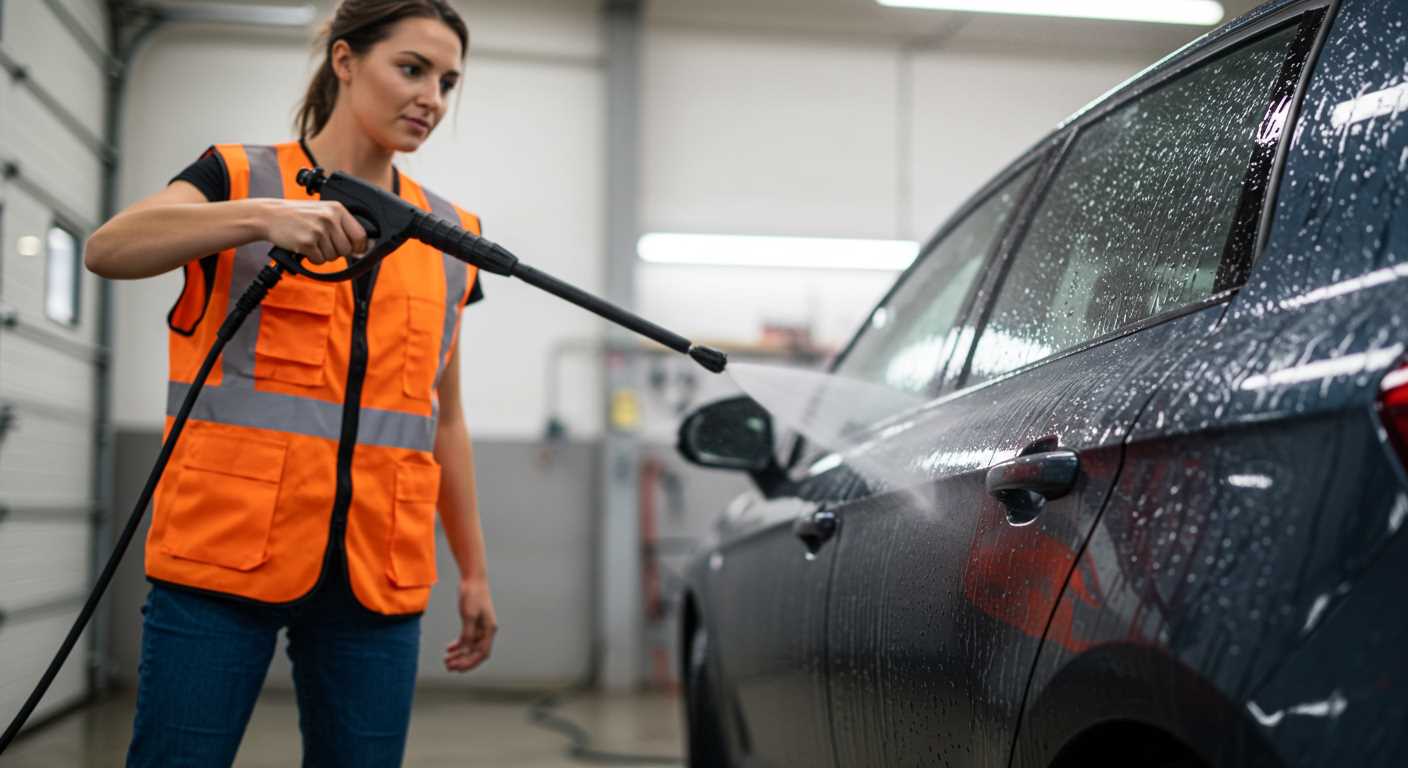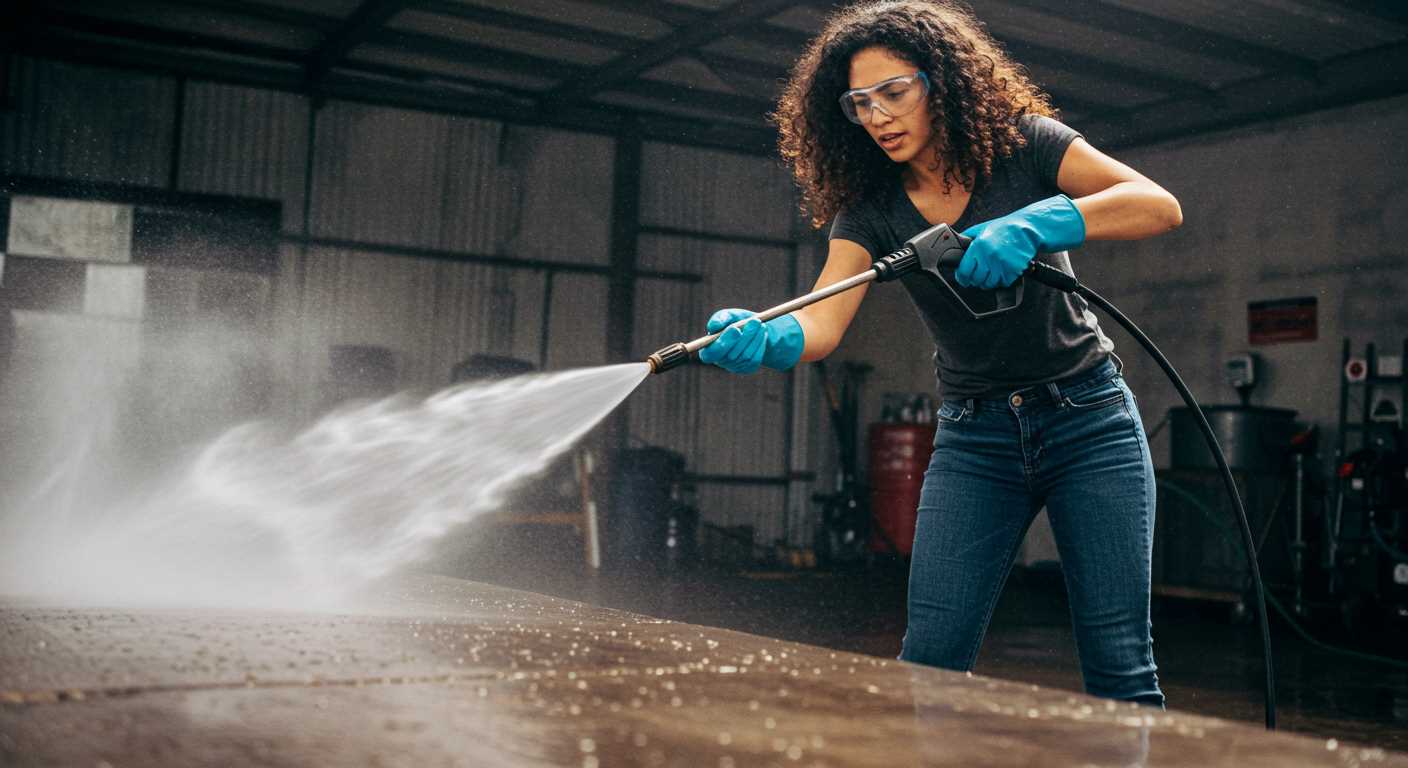




First, assess the situation: if you notice water leaking from your cleaning equipment, it’s likely due to a damaged component. Before diving into any repair, ensure you have the right tools at hand. A set of wrenches, screwdrivers, and sealants will be your best allies in this process.
Next, disconnect the unit from the power source and drain any remaining water. This step is crucial to avoid accidents and ensure a clean workspace. Once everything is dry, visually inspect the area where the leakage occurs. Often, a loose fitting or a worn-out seal is to blame.
In my experience, replacing gaskets can yield impressive results. Use a high-quality sealant designed for high-pressure machinery. Apply a generous amount to the affected area, ensuring you cover all crevices. After reassembling the unit, test it with low pressure before returning to normal operations.
Should the issue persist, consider replacing the entire component. Sometimes, wear and tear are too extensive, and a new part is the best long-term solution. Always consult your equipment’s manual for specifications and compatibility to avoid further complications.
Steps to Fix a Damaged High-Pressure Cleaning Unit
For a lasting solution, consider using a two-part epoxy designed for metal or plastic bonding. This approach has worked wonders for me in the past, especially with components that endure high pressure and temperature. Here’s how to proceed:
- Clean the Area:
- Remove any debris or dirt around the affected spot.
- Use a wire brush or sandpaper to roughen the surface. This enhances adhesion.
- Prepare the Epoxy:
- Follow the manufacturer’s instructions carefully for mixing the epoxy.
- Use a disposable container and stick for mixing to avoid any mess.
- Apply the Mixture:
- Apply the epoxy generously over the damaged area.
- Ensure it penetrates any cracks and covers a slightly larger area than the damage itself.
- Allow to Cure:
- Let the epoxy sit undisturbed for the time specified by the manufacturer. This can range from several hours to a full day.
- Check for any drips or uneven sections and smooth them out as needed.
- Test the Unit:
- After curing, reconnect all hoses and fittings.
- Start the machine and monitor for leaks or any unusual noises.
From my experience, this method not only fixes minor damages but can also prolong the lifespan of your equipment. If the issue persists, consider consulting a professional, as some situations may require more extensive interventions.
Identifying the Type of Crack in Your Pump
Start by inspecting the unit closely. Look for visible fractures, which can vary in size and shape. It’s crucial to identify whether the damage is superficial or if it penetrates deeper into the casing.
Types of Fractures
- Hairline Cracks: These are thin and often barely noticeable. They can lead to performance issues if not addressed early.
- Surface Cracks: More pronounced than hairline fractures, these cracks may affect the integrity of the housing but are often easier to repair.
- Deep Cracks: These can compromise the entire assembly. If you spot one, it may require a replacement rather than a fix.
Tools for Inspection
- Magnifying Glass: This helps to spot smaller fractures that might be missed by the naked eye.
- Water Test: Run the unit and observe for leaks. This can help determine the severity of the issue.
- Ultrasonic Tester: For serious enthusiasts, this tool can detect internal fractures not visible externally.
Pay attention to the location of the damage. Cracks near seals or joints may indicate potential leaks. If your model is a nilfisk pressure washer for car, ensure that you examine the areas around the inlet and outlet connections.
After identifying the type of fracture, you can make informed decisions about the next steps. Remember, addressing issues promptly can save you from more extensive repairs later.
Gathering Necessary Tools and Materials for Repair
For a successful fix, you’ll need to assemble a few specific tools and materials. First off, grab a set of wrenches and sockets. These will help you disassemble the unit with ease. I recommend having both metric and imperial sizes on hand, as different models can vary. A screwdriver set with both flathead and Phillips options is also beneficial for accessing various screws.
Sealants and Adhesives
When it comes to sealing any imperfections, a high-quality epoxy or sealant is a must. Look for products specifically designed for plastic or metal, depending on your pump’s material. In my experience, a two-part epoxy works wonders in filling gaps and restoring integrity. Don’t forget to have some sandpaper handy for smoothing out surfaces before applying any adhesive; it makes a world of difference in ensuring a solid bond.
Protective Gear
Safety should always come first. Equip yourself with gloves to protect your hands from chemicals and sharp edges. Safety goggles are vital to shield your eyes from dust and debris while working. If you’re dealing with older models, a mask can be helpful to avoid inhaling any particles. I learned this the hard way; a little precaution goes a long way.
Draining and Disassembling the Pressure Washer Pump
Before taking apart the unit, ensure that you drain any remaining liquid. Start by locating the drain plug, usually situated at the bottom of the assembly. Place a container underneath to collect the fluid. Remove the plug and allow the fluid to fully drain. This prevents spills and makes the disassembly process cleaner.
Once the liquid has drained, it’s time to take apart the assembly. First, disconnect the power supply and detach any hoses. This step is crucial for safety. Use a wrench to loosen bolts and screws. Keep them in a designated container to avoid losing any parts. Pay attention to the orientation of components as you remove them; taking pictures can help remember how to reassemble everything later.
Taking Apart the Components
Begin with the outer casing. Use a screwdriver to remove any screws securing it. Gently pry it off, being careful not to damage any seals or gaskets. Next, inspect internal components. Some units may have a bearing or impeller that requires careful handling. Note their position and condition as you disassemble. If you encounter resistance, double-check for any hidden screws or clips that might be holding parts together. Avoid using excessive force, as this can cause further damage.
Cleaning and Inspecting Parts
After disassembly, clean each component with a suitable solvent to remove any debris or buildup. Inspect for wear and tear, focusing on seals, o-rings, and any other parts that could affect performance. Identifying issues at this stage is crucial for a successful restoration. Keep track of any damaged pieces that need replacing, as this will inform your next steps.
Cleaning the Damaged Area for Repair
Before applying any adhesive or sealant, ensure the damaged section is thoroughly cleaned. I recommend using a wire brush or sandpaper to remove any dirt, grease, or corrosion. This step is critical; any residue can hinder the bonding process. Make sure to wear gloves and goggles to protect yourself while working.
Using Solvents
After scrubbing the area, use a solvent like isopropyl alcohol to wipe down the surface. This will eliminate any remaining oils or contaminants. Apply the solvent with a clean cloth and allow it to dry completely. I’ve found that skipping this step often leads to unsatisfactory results.
Final Inspection
Once the surface is clean and dry, inspect it closely. Look for any additional damage or rough edges that might affect the repair. If needed, smooth out any sharp areas with sandpaper. A clean and even surface will ensure better adhesion when you proceed with the next steps. Remember to check your surroundings too; a clean workspace helps prevent accidental contamination. If you’re planning a trip and wondering are digital cameras allowed on airplanes, make sure your equipment is in top condition before heading out.
Applying the Correct Adhesive or Sealant
Choose a high-quality epoxy resin for bonding materials in areas subjected to high pressure and temperature variations. I recall a time when I attempted to fix a similar issue with an inferior adhesive, only to find it failed after a few uses. The right epoxy not only creates a strong bond but also withstands the harsh conditions of operation.
Before applying any adhesive, ensure the surfaces are clean and dry. I’ve made the mistake of skipping this step, thinking I could save time. Trust me, it only leads to headaches down the line. Use isopropyl alcohol or a suitable cleaner to remove any grease or debris.
Mix the epoxy according to the manufacturer’s instructions. Precision is key. An improperly mixed solution won’t cure correctly, leading to weak spots. I’ve learned this the hard way, and I can’t stress enough how important it is to follow the guidelines provided.
Apply the adhesive generously to the area, ensuring it fills the crack completely. I often use a small brush or a spatula to spread it evenly. This helps provide a thorough seal and prevents any air pockets that could compromise the bond.
Once applied, clamp the parts together if possible. This prevents movement while the adhesive cures. I’ve found that leaving it undisturbed for the recommended time is crucial for achieving maximum strength. Patience here pays off.
After curing, inspect the joint. A solid bond should feel firm and look seamless. If there are any imperfections, a second application may be necessary. I’ve occasionally had to sand down rough edges lightly before applying another layer for a smoother finish.
Lastly, allow the adhesive to cure fully before reassembling and testing the unit. Rushing this step has led me to redo the entire process on more than one occasion, which is always frustrating. Trust the process and enjoy the satisfaction of a job well done.
Reassembling the Pump and Ensuring Proper Sealing
After applying your adhesive, let it cure as per the manufacturer’s instructions. Once cured, it’s time to put everything back together. Ensure that all components are clean and free from debris before starting the reassembly process. Pay close attention to the orientation of each part; some components may only fit in one direction. Misalignment can lead to leaks or improper function.
Reassembly Steps
Begin with any seals or gaskets. If these were removed during disassembly, replace them with new ones to prevent leaks. Apply a thin layer of lubricant to help them seat properly. Next, carefully align and insert the main body sections. Use a torque wrench to tighten screws to the manufacturer’s specifications. This is critical; overtightening can cause warping, while undertightening may lead to leaks.
Final Checks for Sealing Integrity
Before reconnecting to the power source, conduct a visual inspection. Look for any gaps or misalignments that could indicate improper assembly. To ensure sealing integrity, fill the unit with water and run it at a low pressure. Watch for leaks around the repaired area. If you notice any, you may need to disassemble again and reapply the adhesive or check the alignment. Once satisfied with the sealing, you can confidently reconnect everything and test at full pressure. This methodical approach ensures that the unit operates smoothly and reliably.
Testing the Pressure Cleaner for Leaks and Performance
After completing the repair on the equipment, it’s time to ensure everything is functioning correctly. Start by reconnecting the water supply and checking for any visible leaks at the connection points. A simple visual inspection can save you from further issues down the line.
Conducting a Pressure Test
With the unit connected, turn it on and observe the water flow. A steady, strong stream indicates proper functioning, while erratic flow may suggest internal leaks or issues with the seals. If you notice any irregularities, it’s best to revisit the assembly to confirm that everything is sealed correctly.
Performance Evaluation
Next, assess the cleaning effectiveness. Use the machine on a small, dirty surface. If it cleans efficiently, you’re on the right track. If not, consider checking the nozzle and ensuring it’s not clogged. A clean nozzle is vital for maintaining the right pressure and performance.
| Observation | Action Required |
|---|---|
| Visible leaks at connections | Reassess connections and seals. |
| Weak or erratic water flow | Inspect for internal leaks; check assembly. |
| Poor cleaning performance | Clean or replace nozzle; check flow rate. |
Finally, listen for unusual sounds during operation. Any odd noises could indicate further mechanical issues, signalling that a deeper inspection might be necessary. Regular maintenance checks will help prolong the lifespan of your equipment and ensure optimal performance.
Maintaining Your Pressure Cleaning Equipment to Prevent Future Issues

Regular maintenance is key to longevity. After years of working with various models, I found that a consistent routine can save you from unexpected breakdowns. Start by ensuring that you always clear debris from the inlet filter and nozzle after each use. This simple step can prevent clogs that lead to pressure loss.
Routine Checks
Inspect hoses for signs of wear and tear. I once overlooked a small crack that eventually burst during a job, causing a mess and wasting time. Tighten all connections; a loose fitting can lead to leaks that might not be immediately visible but can gradually worsen. Always check the oil level in the motor, as insufficient lubrication can result in serious damage.
Seasonal Preparation
Before storing your equipment for the winter, flush the system with antifreeze. This practice prevents water from freezing inside the components, which can cause irreversible damage. Additionally, I recommend running a cleaning solution through the system occasionally to keep the internal parts free of build-up. This not only enhances performance but also extends the life of your machine.


.jpg)

.jpg)


